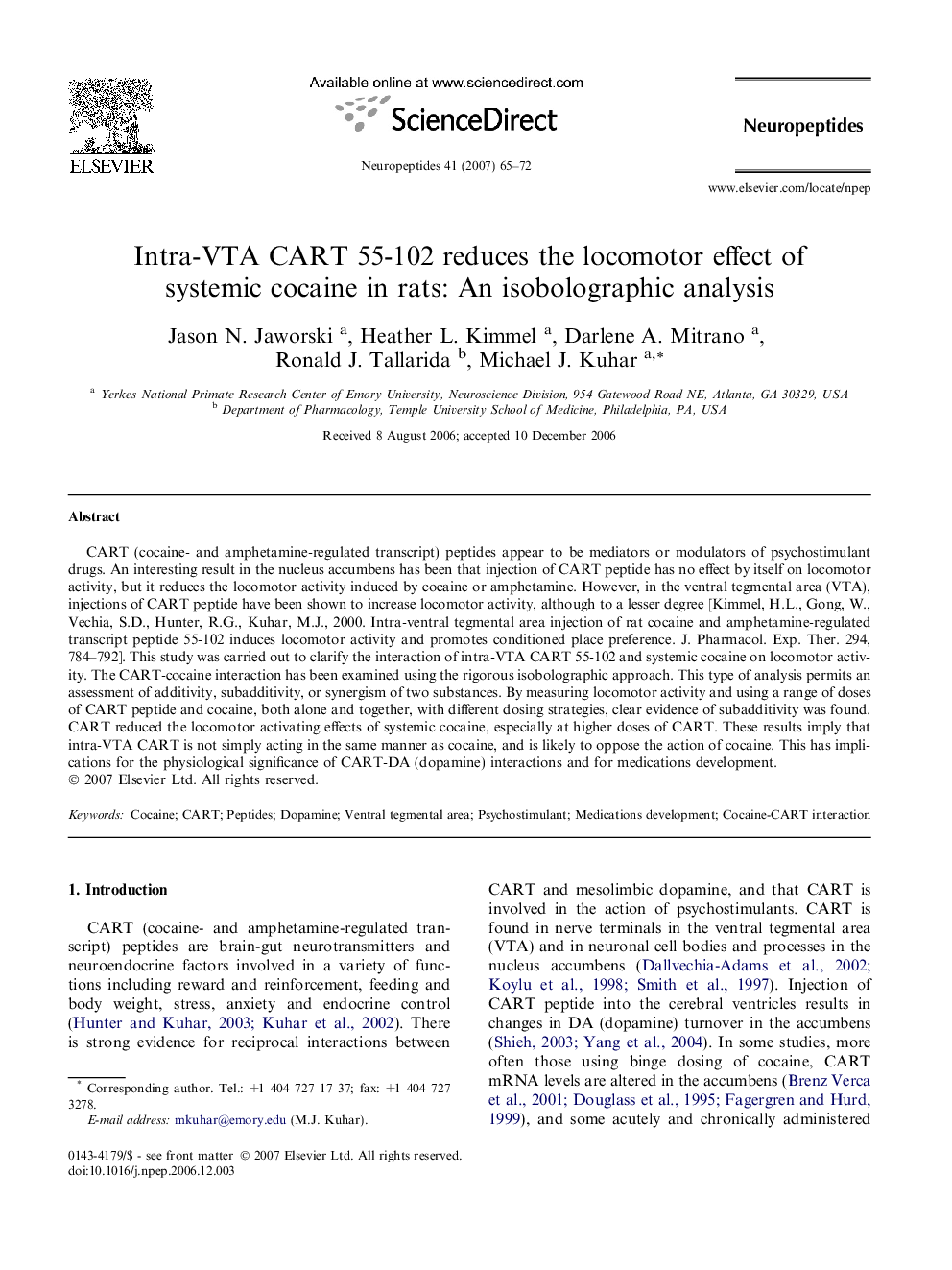| Article ID | Journal | Published Year | Pages | File Type |
|---|---|---|---|---|
| 2808676 | Neuropeptides | 2007 | 8 Pages |
CART (cocaine- and amphetamine-regulated transcript) peptides appear to be mediators or modulators of psychostimulant drugs. An interesting result in the nucleus accumbens has been that injection of CART peptide has no effect by itself on locomotor activity, but it reduces the locomotor activity induced by cocaine or amphetamine. However, in the ventral tegmental area (VTA), injections of CART peptide have been shown to increase locomotor activity, although to a lesser degree [Kimmel, H.L., Gong, W., Vechia, S.D., Hunter, R.G., Kuhar, M.J., 2000. Intra-ventral tegmental area injection of rat cocaine and amphetamine-regulated transcript peptide 55-102 induces locomotor activity and promotes conditioned place preference. J. Pharmacol. Exp. Ther. 294, 784–792]. This study was carried out to clarify the interaction of intra-VTA CART 55-102 and systemic cocaine on locomotor activity. The CART-cocaine interaction has been examined using the rigorous isobolographic approach. This type of analysis permits an assessment of additivity, subadditivity, or synergism of two substances. By measuring locomotor activity and using a range of doses of CART peptide and cocaine, both alone and together, with different dosing strategies, clear evidence of subadditivity was found. CART reduced the locomotor activating effects of systemic cocaine, especially at higher doses of CART. These results imply that intra-VTA CART is not simply acting in the same manner as cocaine, and is likely to oppose the action of cocaine. This has implications for the physiological significance of CART-DA (dopamine) interactions and for medications development.
